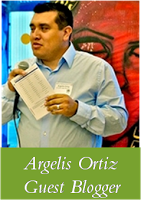by Argelis A. Ortiz, MSW, University of Southern California, Social/Behavioral IRB Community Member
The night before the first meeting where I would serve as a community member on an institutional review board (IRB), I feverishly reviewed research analysis and statistics books, read and re-read the federal regulations (45 CFR 46), and Googled the meaning of “common rule.”
The next morning, I ate breakfast and was impressed by my newfound ability to recite a list of vulnerable populations in alphabetical order: children, human fetuses, neonates, pregnant women, and prisoners. I even made a song out of it, so I would remember when it came time to put my skills to use.
However, none of that mattered.
As soon as I stepped into the boardroom, my nerves got the best of me; I was instantly intimidated by the PhDs, MDs, lawyers, and prestigious research professors sitting around the table. All I could remember was my father’s favorite motto, “fake it ‘till you make it,” which meant the other IRB members didn’t have to be made aware of what I knew and didn’t know. For all I know, I might have intimidated them!
Before the meeting started, the IRB director introduced me to the group and stated my expertise: navigating the child welfare system, working with foster and gang-involved youth, HIV/AIDS counseling, and psychotherapy. Wow! Even I was impressed with the listed qualifications. The introduction provided me with validation for my presence there, and confidence in the fact that I had been chosen to provide the group with my perspective—the community perspective.
The first meeting was relatively uneventful; we reviewed a few new protocols and participated in an educational session. During the meeting, it was of the utmost importance to me that people took the time to listen to my questions and points of discussion. The IRB administrators proved extremely helpful through their willingness to break down the research design and protocol jargon into lay terms for me.
Since my first meeting, I’ve developed my stance:
- Review each research project as if I’m one of the participants;
- Be able to explain in sufficient detail and lay terms the procedures associated with a study; and
- Examine whether the risks of a given study are properly weighed and made clear to the research subject.
Do you have any self-imposed criteria that you use to guide your review of protocols?
In my next few posts as a guest blogger, I plan to discuss the importance of the community member perspective. I hope that you will join me in starting a conversation about the importance of community members on IRBs here.
Furthermore, I hope that you will continue engaging with this topic through PRIM&R’s webinar, Community IRB Members: Supporting Their Involvement to Advance Research. This webinar, dedicated to examining the role of IRB community members, will be offered on July 12, 2011.


As the IRB Administrator of our community hospital IRB, we value our community members significantly. We have been very fortunate to have some of them on the board for many years, which is so beneficial to the research participants, the IRB, the overall community and to the research being conducted here.
As you do, our community members review from the participant's perspective. They really focus on the comprehensiveness of the informed consents as well.
It would be dreamy to have non- scientist community members, but most of our university IRB's community members are scientists conducting research. Do you have any tips for attracting non-scientist community members outside of paying them?
I enjoyed reading your experience. Comepletely different than mine, I didn't prepare as you did the night before. I did however feel the nerves and still do when I know I have to say something that can be contentious.
It is still hard being the only "no" vote on those times when I vote no. How do you handle that?